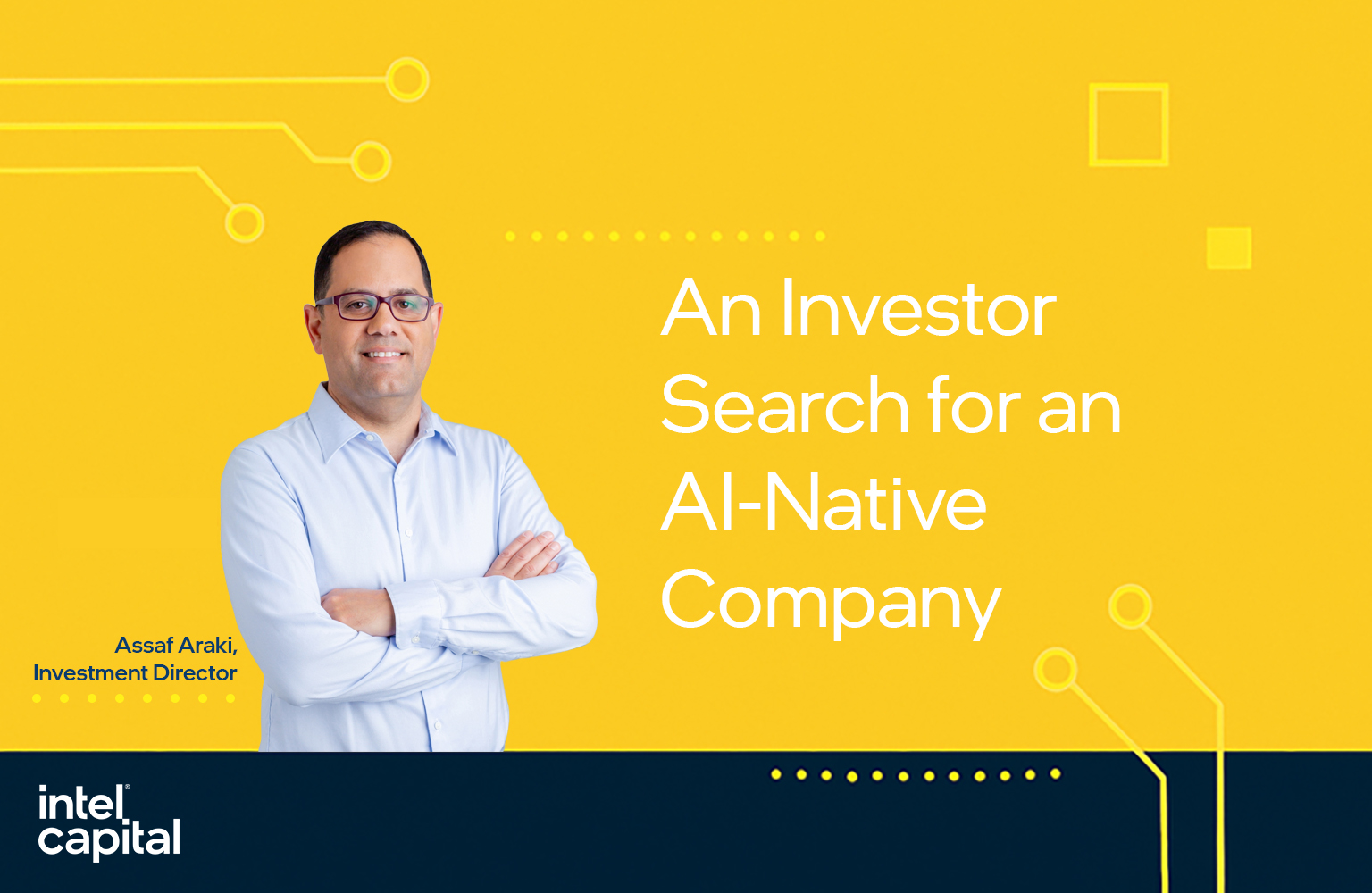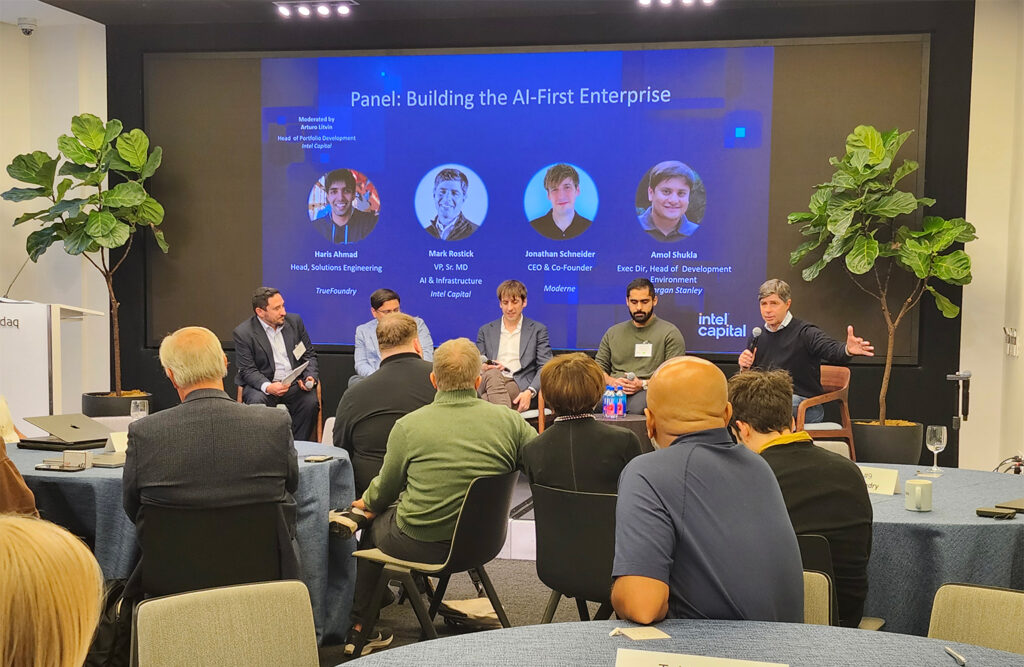
An Investor Search for an AI-Native Company
Exploring what it means to be an AI company
ChatGPT was released in November 2022, marking a major disruption in the AI landscape. While large language models (LLMs) had been available for years prior, ChatGPT represented a significant engineering milestone by packaging these models into a general-purpose, stable application - a conversational AI bot. However, its true breakthrough wasn’t just technical. I would argue that ChatGPT’s most profound impact was cultural: it brought AI into the daily lives of individuals around the world, transforming public perception and our interactions with artificial intelligence. Before ChatGPT, AI was largely the domain of data scientists, typically individuals with advanced degrees (M.Sc. or PhD) in machine learning. Compared to software engineers or business analysts, the data science community was relatively small. Most AI efforts involved building custom, tailor-made solutions, either through internal enterprise teams or via professional services. Very few companies developed standalone AI products, largely due to the high barrier to entry and limited access to specialized talent.
In the years since ChatGPT's release, we have seen a tremendous number of AI startups founded. Earlier this summer, during YC Spring Demo Day, nearly two-thirds of the presenting companies were agentic companies, with the remaining third either building with AI or offering horizontal platforms to develop and accelerate it. It was genuinely difficult to find a company with no AI connection at all. AI is everywhere, similar to how security became embedded in every software product. While we don’t label every software company a “security company,” today it seems like every software company is calling itself an AI company. It’s understandable: AI is the current frontier of innovation, businesses are eager to align with next-gen technology, and budgets have shifted toward Generative AI, driven by the need to address business challenges and capture attention.
In this post, we explore the evolution of AI within organizations and introduce a framework for understanding the different levels of AI integration in companies. We define what it means to be an “AI Company” and explain why, at Intel Capital, we are particularly focused on AI-Native companies. We believe that AI-Native companies are best positioned to fully harness the potential of AI and drive meaningful long-term impact.
What is an AI-Native company?
The QWERTY keyboard layout, named after the first six letters on the top row, was developed in the 1870s by Christopher Latham Sholes for mechanical typewriters. Its primary purpose was to prevent jamming by spacing out commonly used letter combinations, not to maximize typing speed. Over the past 50 years, we've transitioned from typewriters to computers, eliminating the need to slow down for mechanical reasons. As a result, alternative layouts like the Fleksy keyboard have emerged, offering faster and more efficient typing.
Just as alternative keyboard layouts reimagined typing efficiency, AI-Native companies leverage AI to fundamentally transform and disrupt traditional business processes, not simply automate legacy ones.
The Rise of AI Companies: Defining What Truly Qualifies
The adoption of AI within a company is an ongoing journey; most enduring businesses were not AI-driven from the start. Still, it's important to define and distinguish between different types of companies, particularly those that are truly AI companies versus those that are not. There are four levels of companies that leverage AI. The first one is a Traditional/Non-AI Company, where AI plays a very minimal or non-existent role in their core operations, products, or services. They might use some off-the-shelf AI tools for minor tasks (e.g., a basic chatbot on their website), but AI is not integrated into their fundamental business strategy or value proposition.
The next level is an AI-Enabled Company. These companies have started to strategically integrate AI into existing parts of their business to enhance efficiency, automate processes, improve decision-making, or augment current products/services. While AI is important, it primarily serves to optimize or improve their traditional business process rather than influencing the product.
So, what truly makes a company an AI company?
An AI company is an organization whose primary product contains compound AI systems.
For these companies, AI is central to their core product, service, or business model. Their competitive advantage and value proposition are inherently built around AI capabilities. They often develop their own AI technologies or are deeply reliant on advanced AI systems to deliver their main offerings. Many software companies that specialize in AI solutions fall into this category, but it can also include companies in other sectors where AI is the primary driver of their core business. This definition is not limited to software and technology companies. It also applies to businesses in manufacturing, service, healthcare, and more. Ultimately, it’s about returning to the core of AI: conducting business based on data. Both AI-First and AI-Native companies are defined as AI companies. (Picture 1, inside the bold black circle).

What defines an AI company?
There are two key components:
- Primary product
- Compound AI systems
The primary product is the company’s core offering, the product that drives its revenue. To qualify as an AI company, AI must be embedded into this product in a meaningful way. This goes beyond just integrating a chatbot or providing a natural language interface. AI should improve the product, enable new capabilities, or make it significantly easier to use.
The concept of compound AI systems dates back to well before the current wave of deep learning. These systems combine an ensemble of models, access data, and involve external tools and workflows that support decision-making and fallback mechanisms. It's far more sophisticated than a simple use of an API call to an LLM or a statistical model.
While the definition of an AI company may be straightforward in the context of a tech firm, it's less clear when applied to service or manufacturing businesses. For example, if a credit card company develops a chatbot for customer interaction, it’s simply adopting a new channel to engage users. While improving customer service is important, it’s not core to the company’s primary product. In contrast, if a manufacturing company implements an AI assistant that helps technicians diagnose and repair machines more effectively, the impact is more direct, improving product quality and increasing yield. In this case, AI contributes to the core value creation of the business.
AI-First and AI-Native are AI companies. Both apply to the core product, but while AI-First automates existing processes, AI-Native disrupts the process. For instance, rather than deploying a bot that mimics a Sales Development Representative (SDR), an AI-Native company might build a system that gathers contextual data on a lead and initiates a conversation with the tone and insight of a CEO, offering tailored value to drive deeper engagement. In the Business Intelligence (BI) space, AI-Native companies go beyond converting text to SQL or marginally improving data engineer efficiency. They fundamentally expand the BI Total Addressable Market (TAM) by enabling access for teams without data engineers, similar to how cloud-native platforms democratized data warehousing for all software engineers. AI-Native BI empowers non-technical users to make data-driven decisions, unlocking better outcomes across the organization.
Why does it matter?
When a new technology emerges, its vast potential is immediately recognized, but organizations often don’t yet know how to harness it effectively. As a result, they typically start by applying it to low-risk, peripheral problems, which we refer to as AI-enabled use cases. These early applications can yield valuable productivity gains, cost savings, improved services, and even incremental revenue improvement. However, they don’t offer a sustainable competitive advantage. In fact, they often lead to a race to the bottom, as every competitor makes similar efficiency improvements.
To truly differentiate, companies must integrate AI into their core product, the part of the business that drives revenue and defines their market position. Achieving this level of transformation requires more than a simple API call to an LLM. It demands leveraging proprietary data to fine-tune AI for your specific needs and building stable, robust systems. This often involves decomposing complex processes into smaller components, each powered by a mix of models and APIs tailored to the task.
What is our focus at Intel Capital?
When AWS was first launched in July 2002, it provided a set of APIs that allowed developers to build on top of Amazon’s e-commerce infrastructure. It wasn’t until four years later that AWS introduced foundational services like EC2 and S3, marking the beginning of a true cloud computing era. These innovations paved the way for Cloud-Native companies like Salesforce and Snowflake, which redefined how software handles CRM and data warehousing.
Today, startups face a similar inflection point with AI. Simply being an AI company is no longer enough; every competitor is integrating AI into their core product. To truly stand out, startups must become AI-Native: reimagining workflows and product design from the ground up with AI as a core capability, not just a feature. This is the only path to building a defensible advantage, breaking away from the pack, and leading in their market segment.




